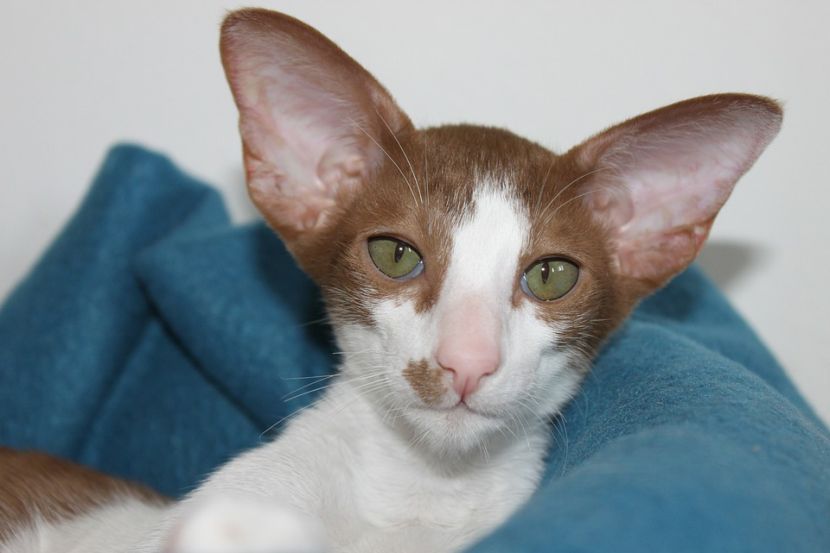
She is very thin and slim, but disproportionate ears and big eyes do not "go" with her elegance, she is very loud and demanding and "gets depressed" if she does not get the owner's attention
Developed by crossing Siamese cats with Russian blues and domestic shorthair cats, Orientals originated in England in the 1950s and 1960s.
In the late 1960s, American breeders created their own variety of Oriental cat by crossing Siamese, Abyssinian and domestic shorthair breeds. The result was an Oriental that was first accepted into the CFA Cat Breeders' Association in 1972: this felinological organization recognizes the short-haired and long-haired varieties of the Oriental cat as a single breed.
Conceived as a solid color cat with a Siamese body, the Oriental is recognized by the International Cat Association (TICA) and the American Cat Fanciers Association (ACFA). These associations recognize the Oriental Shorthair and the Oriental Longhair as two separate breeds.
Body features and colors
The Oriental cat appears in more than 300 different colors and patterns: white, red, cream, black, blue, chestnut, lavender, cinnamon and brown are available in solid colors, and bicolor cats and the smoke color variety are also part of the range of this breed. They have a slender, thin body, disproportionately long and large ears and large eyes.
Orientals can be short-haired or long-haired, with long-haired Oriental cats considered rare.

Energetic, demanding and pampered
Oriental cats are very active and playful and demand their owner's undivided attention, and they are also very vocal: they inherited these traits from the Siamese cat.
They are intelligent and cuddly and as such make ideal pets. They are an excellent choice for families with older children, for homes where there are other animals, but also for single-member households.
Unlike many other races, Oriental women like to meet strangers, but remain faithful to only one person.
Orientals require a lot of attention and will meow loudly until they get what they want. They need frequent human interaction, including plenty of playtime.
They can be a nuisance to less active cats in your home, so it's best to pair them with other Orientals or energetic breeds.
Oriental cat health and care
Oriental women are susceptible to various health problems, including genetic ones. They are prone to diseases that occur in Siamese cats: gastrointestinal diseases, neurological problems, genetic eye diseases and strabismus, lung diseases, heart defects.
Neurological problems are usually caused by the owner's lack of attention or an aggressive approach to the cat.
The care of this cat depends on the variety. If it is a short-haired Oriental, she should be brushed once a week, while a long-haired one should be given time at least twice a week.
Pay special attention to the ears of the oriental cat, which are unusually shaped and quite heavy. A lot of dirt accumulates in them, so you need to clean them several times a week with a cotton cloth dipped in a mild vinegar solution.
The life span of oriental women is from 12 to 15 years.


